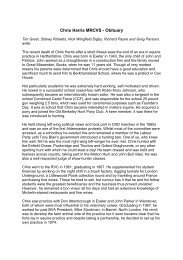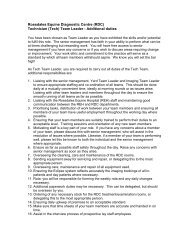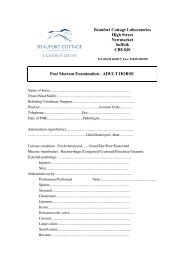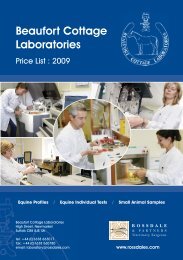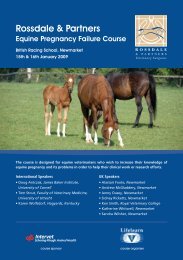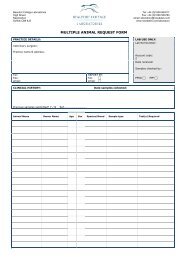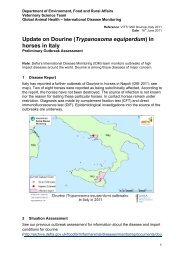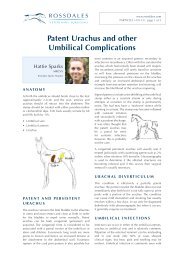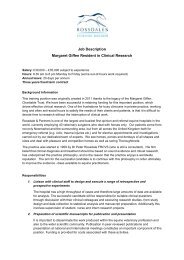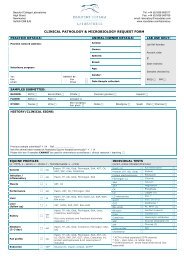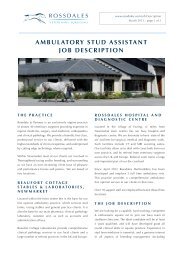EQUINE CLINICAL PATHOLOGY - Rossdale & Partners
EQUINE CLINICAL PATHOLOGY - Rossdale & Partners
EQUINE CLINICAL PATHOLOGY - Rossdale & Partners
You also want an ePaper? Increase the reach of your titles
YUMPU automatically turns print PDFs into web optimized ePapers that Google loves.
G u i d e t o e q u i n e c l i n i c a l p a t h o l o g y<br />
Cryptorchidism<br />
Oestrone sulphate assay may be used as<br />
a cryptorchid or 'rig' test for horses (not<br />
for donkeys) that are over 3 years old (see<br />
table on left).<br />
Thyroid function<br />
Thyroid hormones, i.e. thyroxine (T4) and<br />
tri-iodothyronine (T3) are measured in<br />
equine serum samples. As diurnal rhythms<br />
are involved, two samples should be<br />
collected ideally early in the morning and<br />
late in the afternoon. Low levels (T4 240 nmol/l) in classical cases<br />
(aged, hirsute, polydipsic, polyuric,<br />
glucosuric). However, basal levels are<br />
often within normal range for younger,<br />
developing cases and so TRH stimulation<br />
test, overnight dexamethasone suppression<br />
test or combinations of such tests are<br />
needed to help define pituitary normality<br />
or abnormality.<br />
Insulin<br />
Serum insulin is sometimes a useful<br />
‘screening’ test for equine Cushing’s<br />
syndrome. Results 1000 miu/ml.<br />
Overnight dexamethasone<br />
suppression test<br />
This test is based upon the fact that<br />
dexamethasone administration suppresses<br />
plasma cortisol in normal horses because of<br />
feedback on ACTH release. A resting serum<br />
sample is collected at 5 pm and 40 µg/kg<br />
DXM (Azium, Gist-Brocades, 20 mg/500<br />
kg horse) is injected im. A follow-up serum<br />
sample is collected at 12 pm the following<br />
day. Normal horses show a suppression of<br />
serum cortisol levels to



